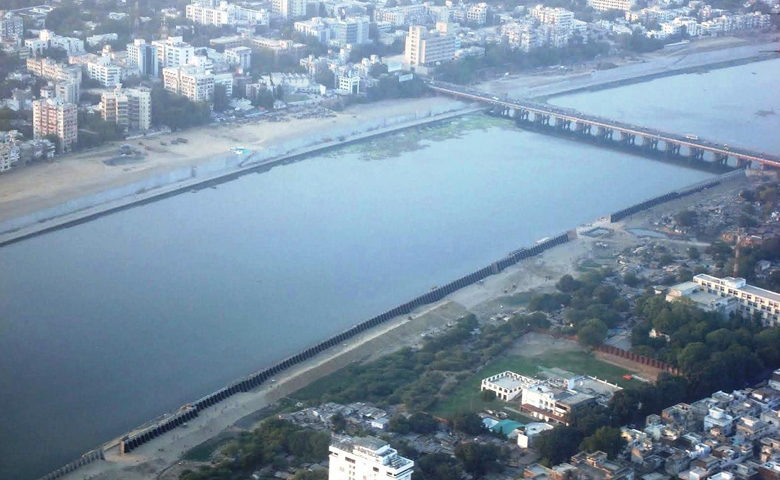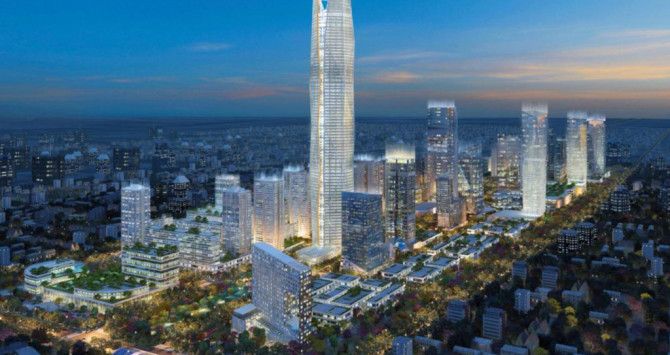Ahmedabad City, how it is growing, key growth vertical of the city. Why?

Like most prosperous and old cities of the world, Ahmedabad has developed in the riverbank of Sabarmati. City not only is divided geographically north south but also historically, whereas the eastern side the walled city, history well perched in 500-year-old history, the west is the new and prosperous side of the city very much like half of world cities.
Also, very much like most of the world cities like London, Paris, Delhi developed around the river are predominantly round cities unlike the Mumbai’s of the world which is specifically a vertical city north – south and lack of land has also made the city grow vertically as well.
Though Ahmedabad is the financial capital of the state, industrial sector is still the major source of employment in the city. The development of new industrial locations has led to the development of housing colonies around those locations. Ahmedabad was predominantly a walled city till the independence of the country, but post that it has grown manifold in the last 7 decades.
Initially the mill owners and the prosperous of the town moved outside the walled city, but slowly steadily the western part of the city has developed into HIG / HMIG Commune. Other than the availability of land, what also helped was the setting up educational and few government institutes on the western side of the town. Today those university grounds and the government institute are the main source of the open areas in the congested city.
Earlier as the city was on the eastern side of the city, the first formal industrial settlement was south of the city, aided by the western passing from there. Later mainly in last decade of the 20th century the city saw the industrial development moving westward towards the south west outskirts of the city. This was mainly due to the connectivity being better as the industrial belt developed along the Rajkot Highway in the south west of the city and the extending upwards north to Gandhinagar. Development of textile, chemical and pharmaceutical industries, growth in IT/ITeS space and other favorable factors has made Ahmedabad a highly desirable residential destination across India.
When the city started moving westward, the residential development genre was mainly of individual bungalow segment. But lack of space and ever-increasing cost of land has seen the bungalows slowly only available in the outskirts of the city. But due to unavailability of land and high prices of real estate, the growth in residential space has been powered by the high-rise apartments.
If one has to highlight the prime residential areas in the city then Shahibaug (in northern region), Satellite, Prahladnagar, Bodakdev, Vastrapur, Thaltej (in western region), Maninagar and area around Kankaria (in eastern region).
The 1st decade of the 21st century saw the industrial development further growing in Sanand and Changodar region. Moving of the Tata Plant to sanand from West Bengal saw the region fast tracking into a major industrial hub of the city.
This led to phenomenal real estate development around the bopal region which was till then the peripheral region of the city. In last decade it has changed from the satellite town to be prime residential region of the city. Excellent road connectivity with further new road network planned and proximity to both changodar and sanand has seen the region grow very quickly. It has become the prime location for HIG / HMIG category housing commune. Commercial space to cater to local requirement has also developed around there
Recent changes in the General Development Control Regulations -incentivizing the affordable housing supply, has seen significant new housing supply being proposed mainly in the western suburbs of Bopal – Thaltej belt.
In comparison to the same, the northern part of the city has seen residential development and likes of large township development renowned developers in the country but willingness to move there due to lack of connectivity to work area and schools has led to comparatively very less demand in the region. But with two of the largest industrial houses (Adani and Zydus) of the city committed to move their corporate houses in the region, the region is expected to see the huge filip in the coming couple of years. Both Adani and Zydus put together is expected to occupy more than million sqft and employ close 10,000 people in the region.
Other than this the major other area of development has been the eastern part. What started as solution to the requirement of housing of LIG/ MIG category in the region has become a very large speculative development economy in the region. Excessive supply has put a huge strain on the capital appreciation in the region. Few of the developers have tried to develop HMIG/ HIG category housing commune but have met with limited success.
Looking at the growth of the city and the other infrastructure be it the school, education institutes, industrial, the presence of the IT/ ITES service industry and the favourable physical infrastructure, the western region of bopal – thaltej- shilaj is expected to see a huge development further in the coming decades whereas the eastern region may not see such due to limited demand and existing over supply in the region.


